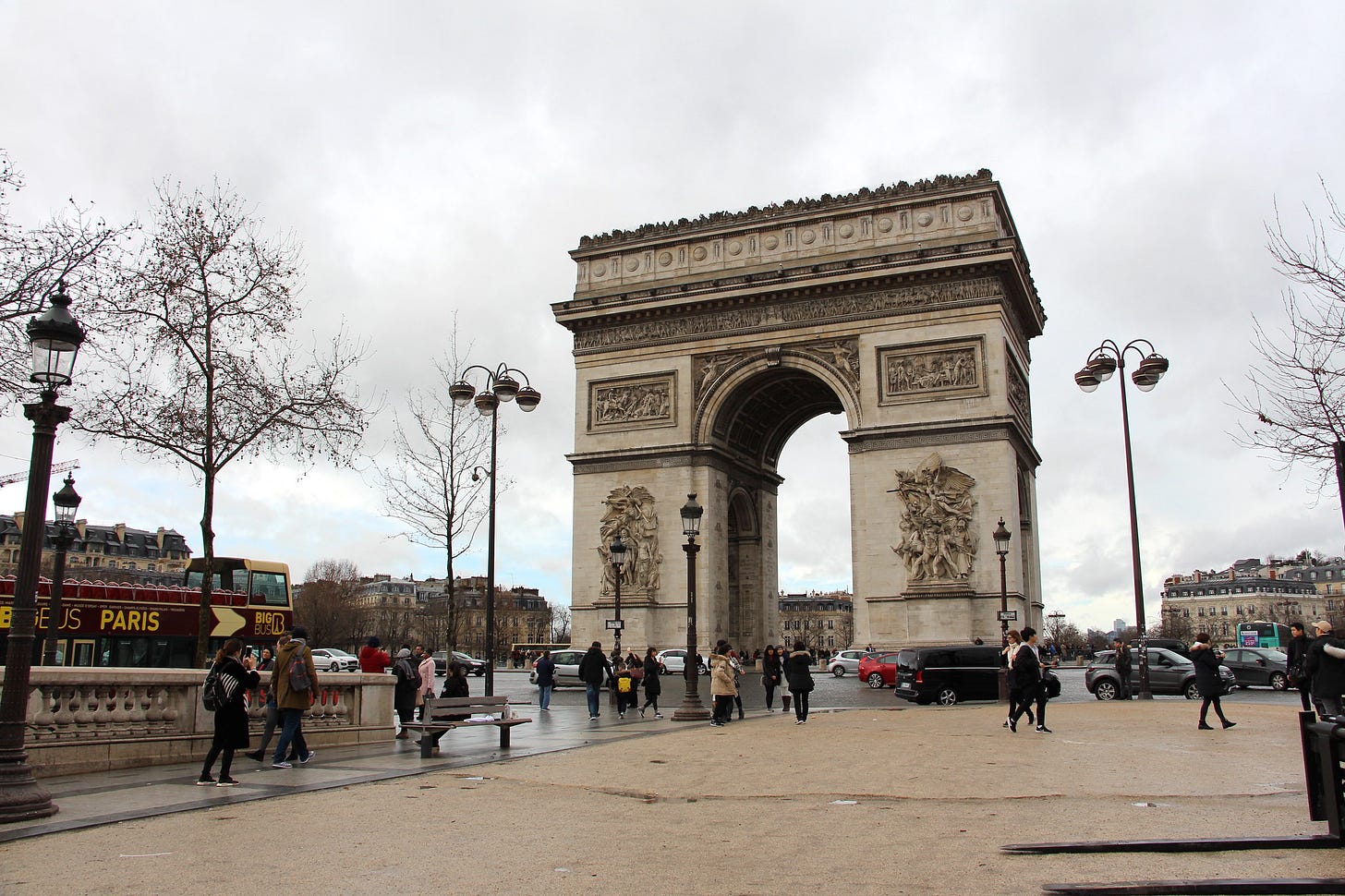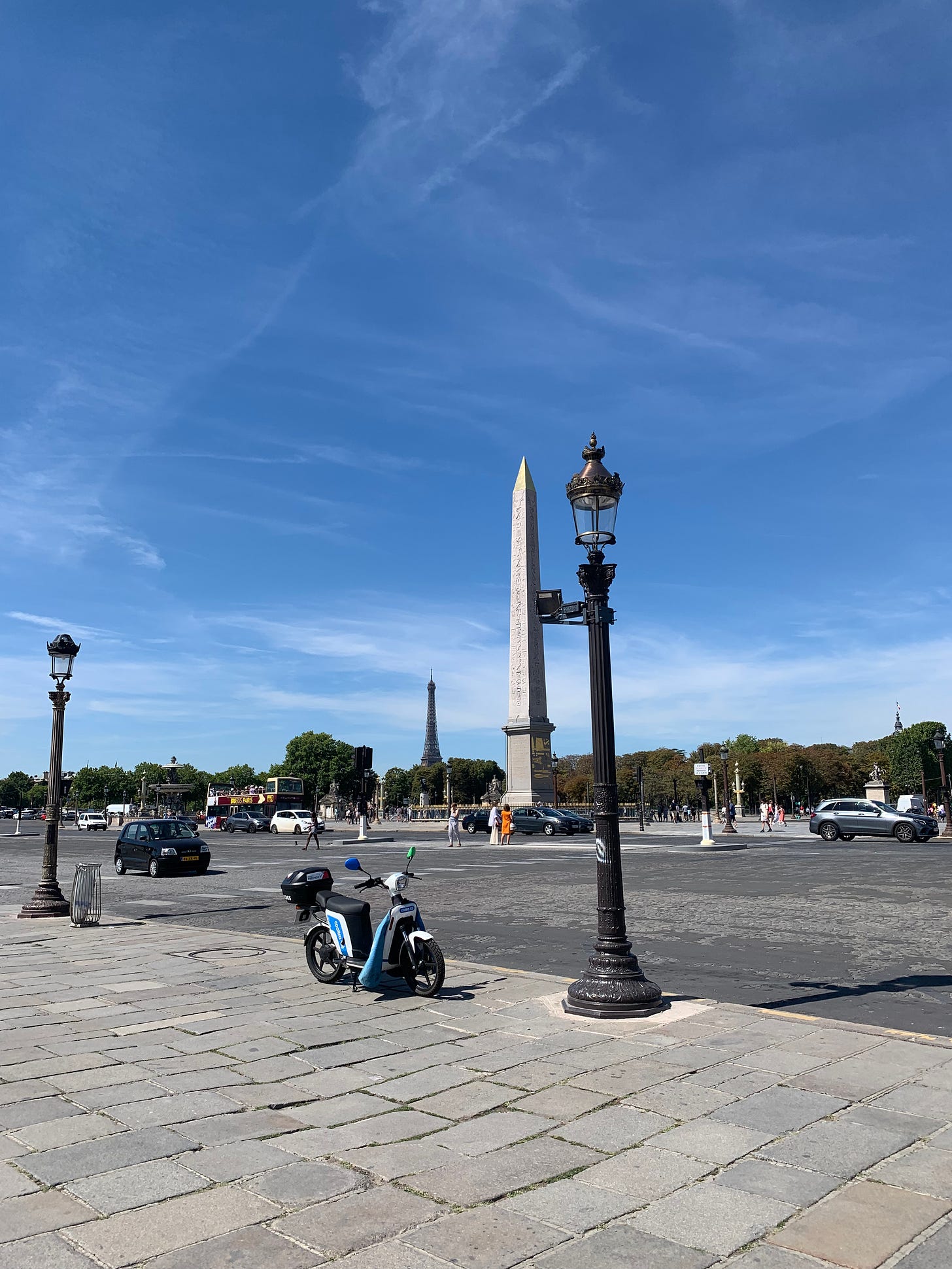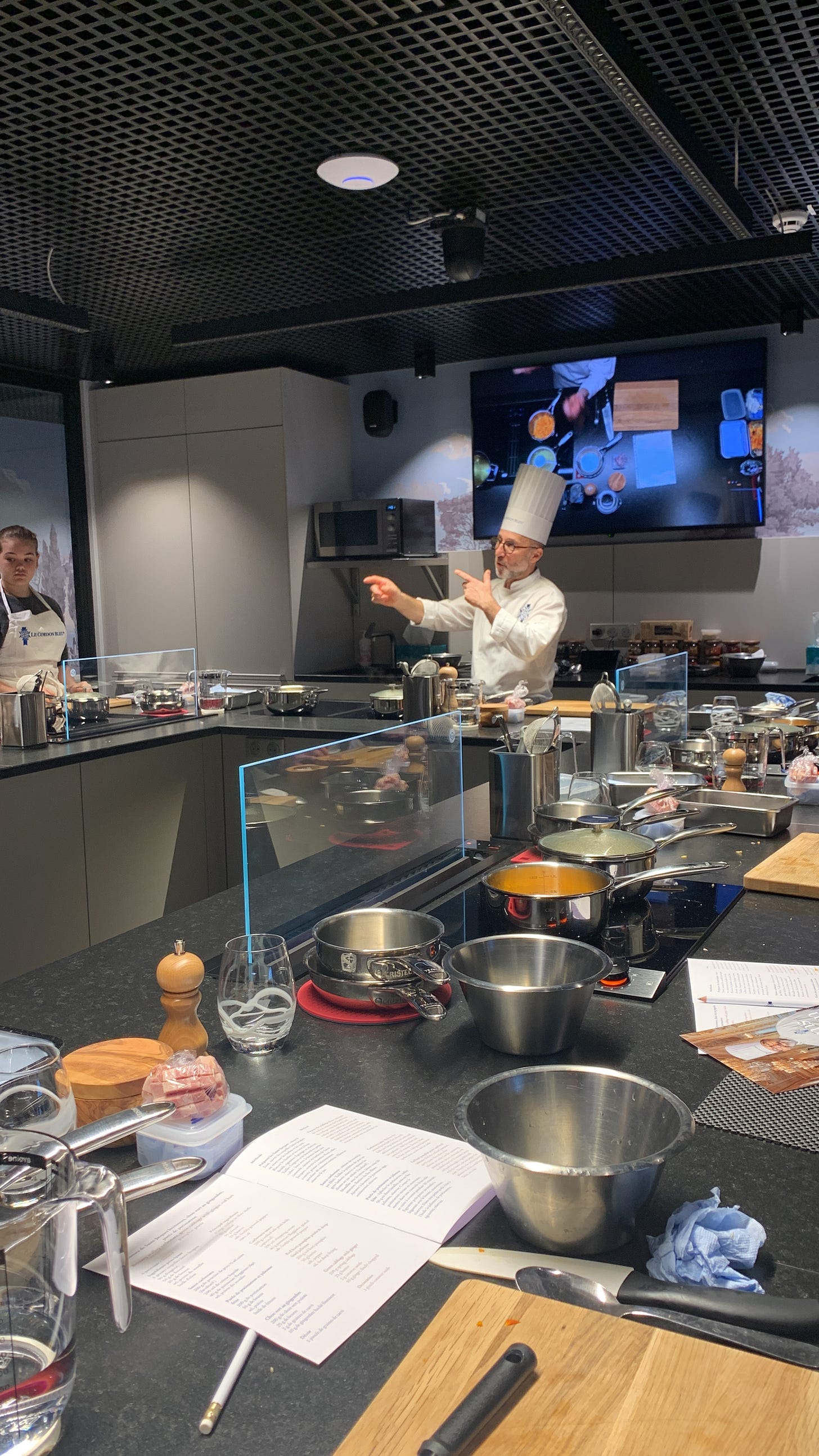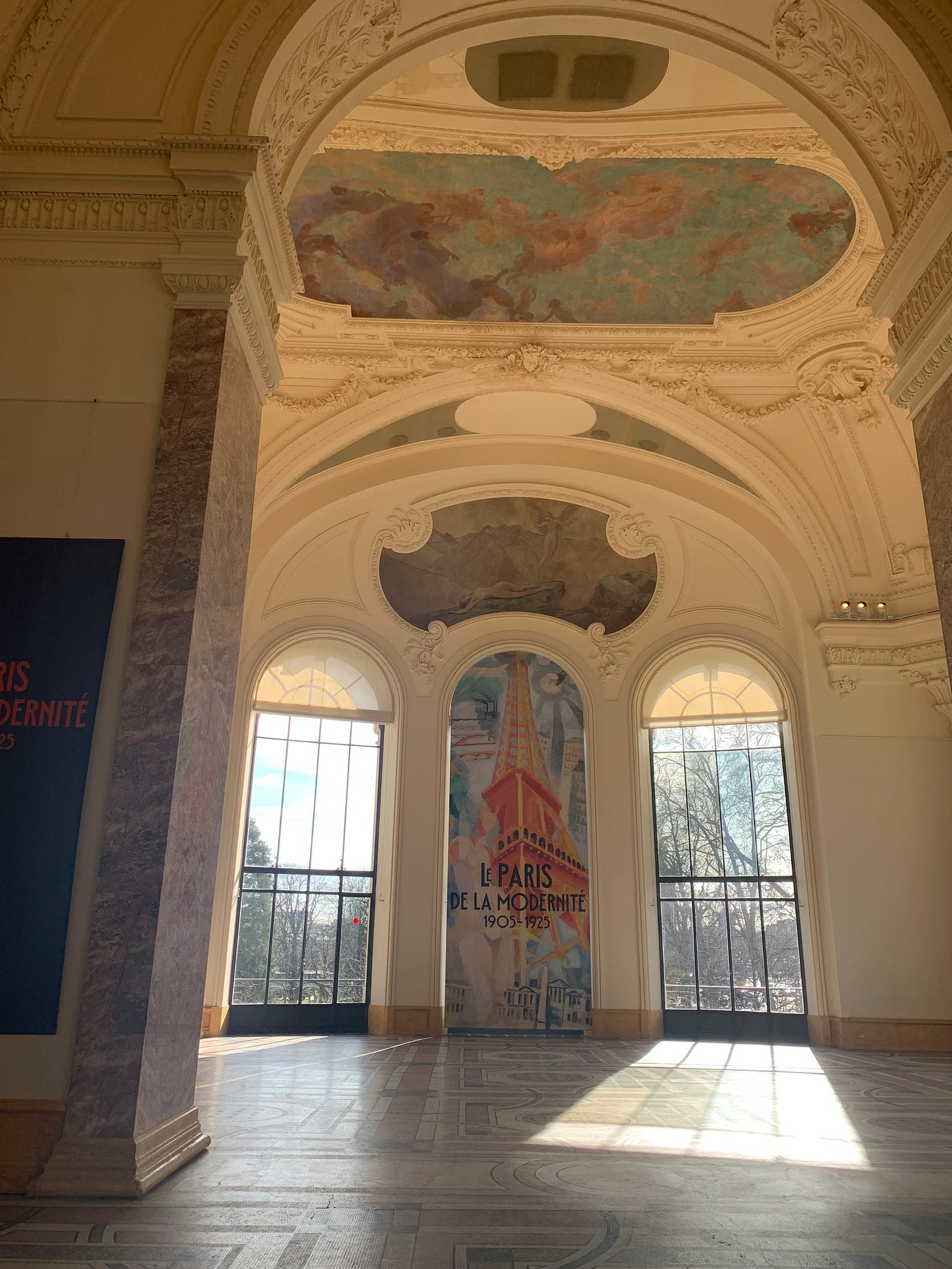As compared to other European capitals like London or Rome, Paris is actually relatively well-contained and pretty walkable. And while the streets definitely don't run in straight lines (much to the horror of this native New Yorker), it’s relatively easy to see where you're going thanks to the system of arrondissements or districts, numbered 1 to 20, which spiral out in a snail shell shape from the first in the center to the 20th in the northeast.
After eighteen years here, one of my favorite activities is to explore unfamiliar corners of Paris, getting to know the personality and unique offerings of each of the arrondissements. And this gave me the idea for a new series exclusively for my subscribers: my hit list, if you will, of the must-dos (and must-eats) in each of Paris’ 20 districts.
We’ve already ventured through the 1st arrondissement, home to the Louvre, and the 2nd arrondissement, Paris’ smallest. We’ve delved into the 3rd arrondissement, aka most of the Marais, as well as the islands that encompass much of the 4th. We wended our way through the 5th arrondissement, Paris’ oldest, and through the 6th arrondissement, long beloved by literary legends. We paid a visit to the Eiffel Tower in the 7th arrondissement, so it’s high time we headed into the luxe 8th!
The 8th Arrondissement in Short
The central 8th is perhaps best known as the home of Paris’ most famous avenue: the Champs Elysées, synonymous with luxury and grandeur. These themes resonate through the arrondissement. You’ll encounter incredible views of the Arc de Triomphe, which straddles the 8th and the 17th to the west, and the Palais Garnier, just over the eastern border in the 2nd. It should come as no surprise that the 8th is also home to a number of Paris’ top luxury hotels, from the Crillon to the Bristol to the Plaza Athénée.
While many choose to stay in the 8th for its prestige, it can be a bit imposing and difficult to get to know. There are far fewer neighborhood staples like boulangeries and small bistros here than in many other Parisian neighborhoods. But for lovers of haute couture, it’s a veritable haven, and what’s more, the 8th is home to a few lesser-known museums and one of Paris most beautiful parks.
The 8th arrondissement borders the Seine, with its southern edge stretching from the western tip of the Jardin des Tuileries to the Pont de l’Alma. To the west, it runs along Avenue Marceau to the Arc de Triomphe, which straddles the border between the 8th and the 17th. To the north, the 8th meets the 17th along Boulevard de Courcelles and Boulevard des Batignolles, encompassing the gorgeous Parc Monceau. To the east, it abuts the 9th along rue d’Amsterdam and rue Tronchet, kissing the edge of the Tuileries Gardens at Place de la Concorde.
The Landmarks: Place de la Concorde, Arc de Triomphe, Champs Elysées, Musée Nissim de Camondo, Musée Jacquemart-André, Grand Palais, Petit Palais, Gare Saint-Lazare, Parc Monceau
The Vibe: Luxe, grand, and elegant
My Perfect Day in the 8th Arrondissement
The perfect French day in any arrondissement begins, of course, with breakfast, and there’s nowhere better to begin a luxury day in the 8th with a petit déjeuner from one of the neighborhood’s palace hotels. This term refers to just 31 ultra-luxe five-star French hotels, twelve of which are in Paris and six of which are in the 8th.
Le Bristol (112, rue du Faubourg Saint-Honoré) is one such hotel. It costs 1,400 euros a night to stay in even its simplest room, making the four-euro croissant from its excellent on-site bakery seem comparatively approachable. Lovers of a savory breakfast may instead enjoy the savory brioche with Comté, chorizo, and Espelette pepper. Take your spoils just five minutes to the Hôtel Mathis (3, rue de Ponthieu), where you can get excellent coffee from the on-site outpost of Coutume. Enjoy both in the Jardin des Champs-Elysées with a view of the most famous avenue in the city – nay, the world.
The Champs-Elysées was originally designed in the 17th century by André Le Nôtre, the gardener to the Sun King. It was imagined as part of an historical axis intended to extend from the Tuileries Palace to the west. Georges-Eugène Haussmann left his mark on the avenue during his 19th century renovation of the city, and ever since the destruction of the Tuileries Palace in 1871, it has formed part of the line linking three triumphal arches: the Louvres Arc de Triomphe du Carrousel, the Arc de Triomphe, and the modern Grande Arche de la Fraternité in the business district of la Défense, in the suburb of Courbevoie.
The Champs-Elysées proper runs nearly two kilometers and starts at Place de la Concorde, so brush off your breakfast crumbs and head to the eastern limit of the 8th to begin your morning walk.
Place de la Concorde, aka “Harmony Square,” is currently home to an imposing obelisk that was gifted (or looted?) from the Luxor Temple in Egypt in 1836; the eight statues surrounding it represent the major cities of France and were built in 1838. The obelisk’s golden hat cost 1.5 million francs and was added in 1998 as a symbol of Franco-Egyptian relations.
But the the imposing square wasn't always such a symbol of fraternity. From 1789 to 1795, it was known as Place de la Révolution, and it was here that Louis XVI, Marie Antoinette, Camille Desmoulins, Maximilien Robespierre, and 1,115 others met their bloody ends by guillotine.
Leave the square and the Tuileries behind you, and begin your walk along the famous Champs, known for its luxury shops. J.M. Weston (55), Lacoste (93), Longchamp (77), and Cartier (154), and it’s also home to a former mansion belonging to the Guerlain family built in 1914, now listed as an historic monument and an outpost of the luxury brand. The five-floor Louis Vuitton flagship on the corner of the Champs-Elysées and Avenue George V is the brand’s largest, located in a gorgeous Art Deco building.
For years, the an association of merchants along the avenue founded in 1860 attempted to push back against non-luxury brands opening along the prestigious avenue, and in 2007, it attempted to prohibit H&M from opening an outpost. It nevertheless got its spot two years later at number 88, and these days, you’ll also find Zara (92), Sephora (72), and not one but two McDonald’s (140 and 84).
Football fans will want to check out the official PSG store (92). And of course, this is also where you’ll find the temple of macarons, Ladurée (75), home to not just a pastry shop but a full café and a winter garden overlooking the Champs. (Though I personally prefer the macarons from Pierre Hermé, who shares his Champs-Elysées address with l’Occitane in an innovative concept store 86Champs (86), where you can enjoy not just his famous macarons but a few unique creations inspired by the Southern French origins of the parfumier, like a cedar pine praline tart.)
Lovers of all things luxury need not limit themselves to the Champs alone. The “Golden Triangle” is a micro-district encompassing avenues Montaigne and George-V, and along with the shops along the rue du Faubourg Saint-Antoine, there’s more than enough for a lover of luxury shopping to explore. Be sure to slip into the Galerie Dior (11, rue François 1er), a unique space dedicated to the brand’s long history.
That said, if shopping isn’t quite your cup of tea, there’s still more than enough to enjoy along the famous avenue.
Le Cordon Bleu has an outpost of its famous cooking school at the Hôtel de la Marine (2, place de la Concorde) offering mealtime cooking classes, macaron workshops, and more in both English and French.
Following your class, take a slightly more scenic route along the Champs, stopping off at the Square de Berlin (1, avenue de Sèlves) to see a piece of the Berlin wall.
You could also stop off at the Petit Palais (avenue Winston-Churchill), known for its collection of fine arts, beautiful inner courtyard, and variety temporary exhibits. It faces the even grander Grand Palais (3, avenue du Général Eisenhower). Both were built for the 1900 World’s Fair.
Either way, be sure to follow the Champs all the way to the Arc de Triomphe. The triumphal arch was commissioned by Napoleon in 1806, after his victory at Austerlitz, though he never saw it completed. Pay respects to the Tomb of the Unknown Soldier beneath it before climbing to the top for a stunning view of the étoile or star of 12 avenues radiating out from the arc – and the absolute insanity that comes from a roundabout with eight lanes, no lane lines, and priorité à droite.
By now, you're definitely ravenous – and luckily, I’ve got the perfect lunch spot.
Subscribe to read on and discover my favorite off-the-beaten-track architectural gem and the very best high “tea” in Paris!
Keep reading with a 7-day free trial
Subscribe to Emily in France to keep reading this post and get 7 days of free access to the full post archives.








